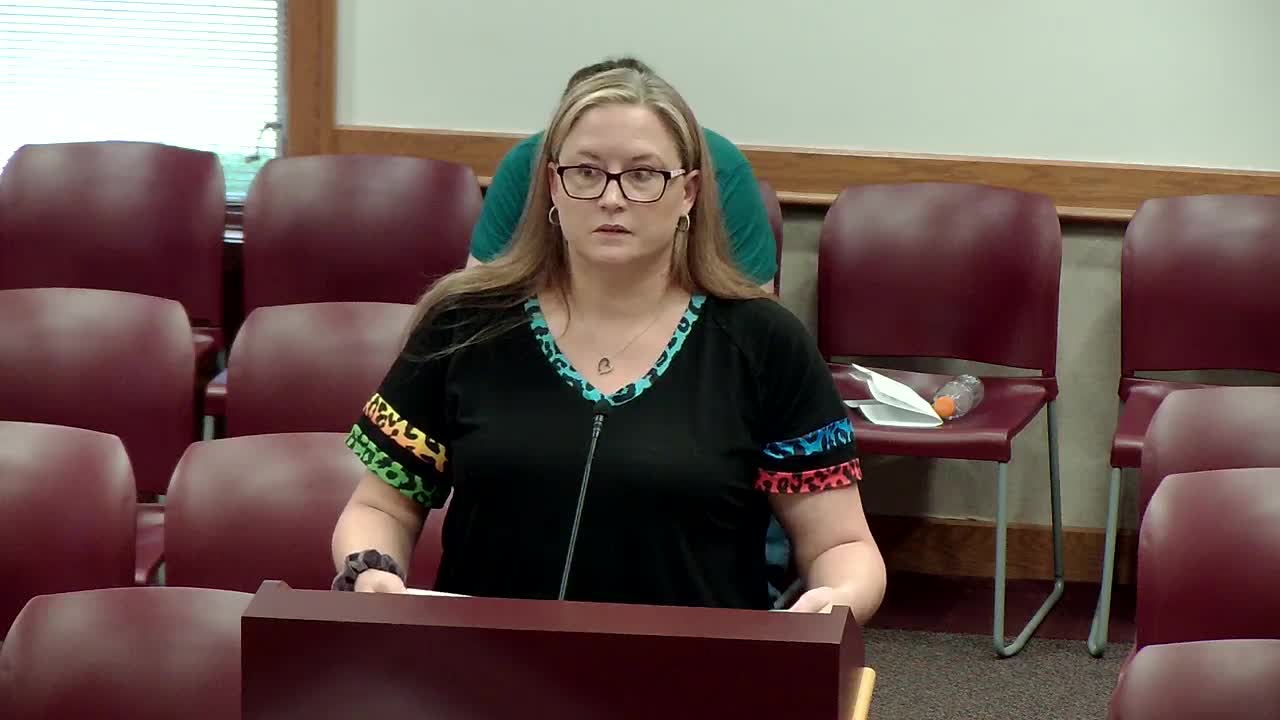Bethel Council Explores Transitional Zoning Amid Development Controversies
July 28, 2025 | Huber Heights, Montgomery County, Ohio
This article was created by AI summarizing key points discussed. AI makes mistakes, so for full details and context, please refer to the video of the full meeting. Please report any errors so we can fix them. Report an error »

In the heart of Huber Heights, a recent city council meeting unfolded with a palpable tension, as council members grappled with the complexities of zoning regulations and community development. The discussion centered around transitional zoning, a concept already embedded in the zoning code of nearby Bethel, which had sparked a debate about its potential application in Huber Heights.
One council member passionately argued that Bethel could have approved zoning for a new development that would have harmonized with existing properties, suggesting a layout that transitioned from larger lots near the main road to denser housing further back. This approach, he noted, could have alleviated some of the concerns raised by residents regarding the density of new developments.
However, the conversation took a sharp turn when the topic of past referendums arose. It was revealed that previous development proposals in Bethel had been overturned by voter decisions, leading to frustration from developers who felt compelled to seek opportunities elsewhere. The council member emphasized that the decision-making process had already progressed beyond the point of no return, likening it to "toothpaste out of the tube."
As the meeting continued, emotions ran high. One council member defended his integrity against accusations of dishonesty, asserting that he had dedicated years to understanding the intricacies of local governance. He recounted a meeting with the school district's superintendent, expressing disappointment that the outcomes of their discussions were misrepresented in subsequent board meetings. His insistence on transparency highlighted the importance of accurate communication between the city council and educational leaders.
The meeting encapsulated the challenges faced by local governments as they navigate development pressures while striving to maintain community trust. As Huber Heights looks to the future, the discussions from this meeting will likely resonate in ongoing debates about zoning, development, and the relationship between city officials and residents. The path forward remains uncertain, but the commitment to dialogue and transparency is clear, setting the stage for future conversations that will shape the community's landscape.
One council member passionately argued that Bethel could have approved zoning for a new development that would have harmonized with existing properties, suggesting a layout that transitioned from larger lots near the main road to denser housing further back. This approach, he noted, could have alleviated some of the concerns raised by residents regarding the density of new developments.
However, the conversation took a sharp turn when the topic of past referendums arose. It was revealed that previous development proposals in Bethel had been overturned by voter decisions, leading to frustration from developers who felt compelled to seek opportunities elsewhere. The council member emphasized that the decision-making process had already progressed beyond the point of no return, likening it to "toothpaste out of the tube."
As the meeting continued, emotions ran high. One council member defended his integrity against accusations of dishonesty, asserting that he had dedicated years to understanding the intricacies of local governance. He recounted a meeting with the school district's superintendent, expressing disappointment that the outcomes of their discussions were misrepresented in subsequent board meetings. His insistence on transparency highlighted the importance of accurate communication between the city council and educational leaders.
The meeting encapsulated the challenges faced by local governments as they navigate development pressures while striving to maintain community trust. As Huber Heights looks to the future, the discussions from this meeting will likely resonate in ongoing debates about zoning, development, and the relationship between city officials and residents. The path forward remains uncertain, but the commitment to dialogue and transparency is clear, setting the stage for future conversations that will shape the community's landscape.
View full meeting
This article is based on a recent meeting—watch the full video and explore the complete transcript for deeper insights into the discussion.
View full meeting
